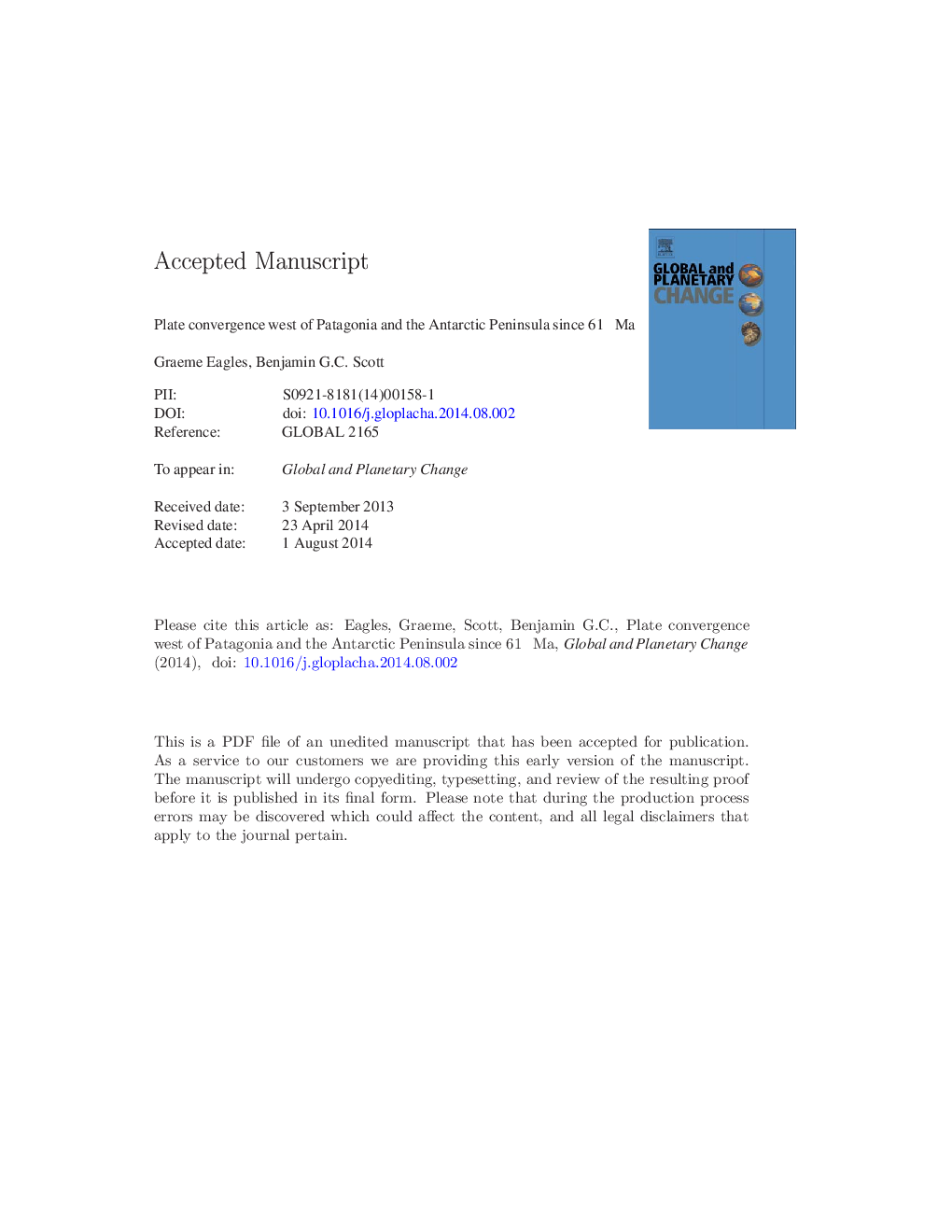| Article ID | Journal | Published Year | Pages | File Type |
|---|---|---|---|---|
| 6348153 | Global and Planetary Change | 2014 | 31 Pages |
Abstract
A new plate kinematic model portrays plate motions immediately west and south of Drake Passage in the southeast Pacific Ocean. Overall intermediate-to-slow rate spreading generated oceanic lithosphere as the Phoenix plate diverged from the Antarctic plate. The model shows a history of Phoenix plate motion that is interpretable as having been affected by a northeast-increasing gradient in the slab pull force since chron 18 (39Â Ma), during which time newer, less dense lithosphere was subducting in the southwest than in the northeast. The model allows first calculations of Phoenix-Farallon (Nazca) plate motion parameters in the south Pacific plate circuit. Using these parameters, it is possible to show that the simplest assumptions about the ridge's segmentation, length and migration are consistent with existing suggestions of its location from consideration of slab window-related volcanism at sites in South America around 50 and 20Â Ma. The parameters thus define ridge locations that can be used to define which plates were subducting beneath South America and the Magallanes and Antarctic plates, and when. We consider the relationships between the plate convergence rate, obliquity and the history of magmatism on the Antarctic Peninsula and at the North Patagonian batholith, showing that magmatic pulses can be related to accelerations in the plate convergence rate. Between these settings, Phoenix-South American plate motion was almost parallel to the Fuegian trench. Here, magmatism in Paleocene to early Miocene times must be related to the presence of a slab subducted beneath the region by the less oblique collision further north. Later magmatism can be related to migration of the Phoenix-Farallon ridge and Phoenix-Farallon-Antarctic triple junction into the area south of the Fuegian margin, which brought it into slow low-obliquity convergence with first Farallon and then Antarctic plate lithosphere.
Related Topics
Physical Sciences and Engineering
Earth and Planetary Sciences
Earth-Surface Processes
Authors
Graeme Eagles, Benjamin G.C. Scott,
